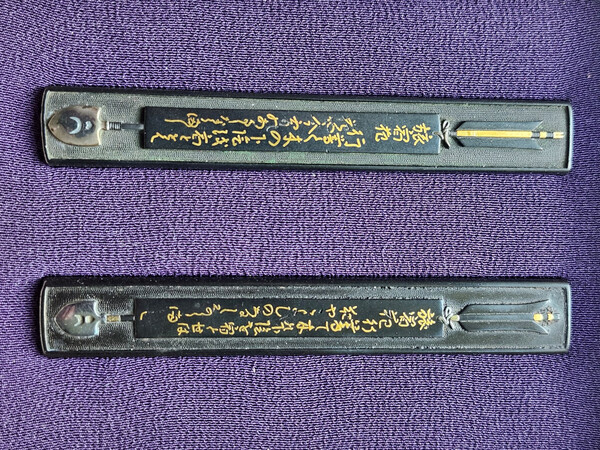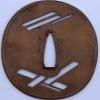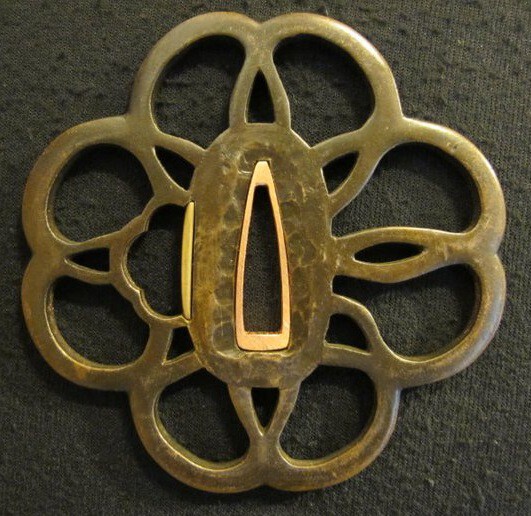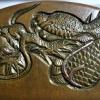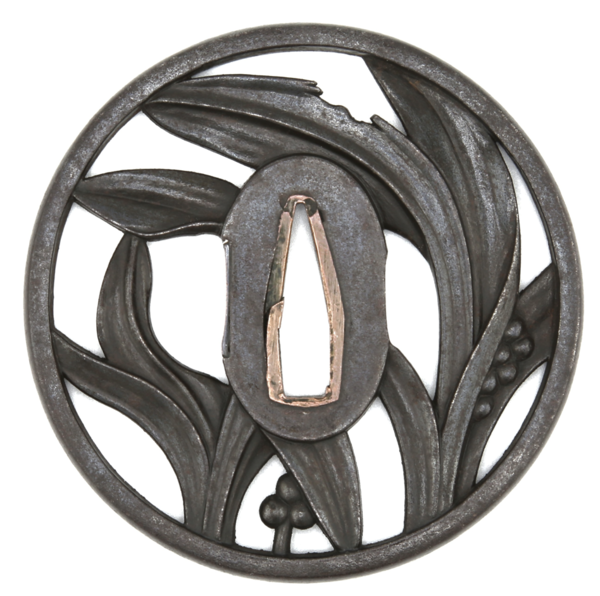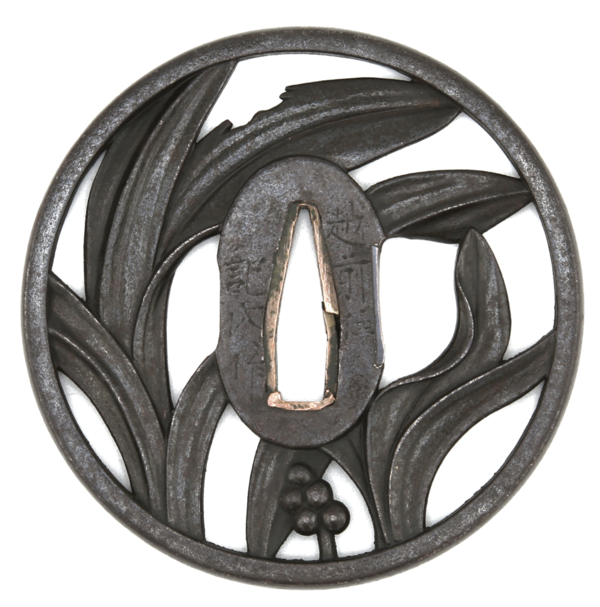All Activity
- Past hour
-
I searched around and could not find an image example to share of a seppa with profile for a bohi. So it must not be super common. I already pester Brian enough and he's super busy, otherwise I'd ask him I think most seppa that I've encountered "in the wild" are generic ones too; but as @Stephen points out, a properly fitted seppa should be snug, therefore one should fit slightly higher then the other. Some more speculation: During WW2, we know that seppa were sometimes numbered on outfitted swords - presumably to keep the individual fitted parts together and not to mix them up during production and outfitting. BUT, WW2 also brought a lot of mass production and standardization; It would not surprise me if they pumped out seppa blanks to then be machined for individual swords. Furthermore, it would not surprise me if many of those seppa blanks worked "good enough" as is, especially later in the war or for civilian gunto. Sorry for all the speculation, but hey, seppa info is hard to find -Sam
-

New Member Introductions
Bruce Pennington replied to Dusty62's topic in General Nihonto Related Discussion
Welcome, Shaun! Now that you've dipped your toe in the Japanese sword world, do you plan to start collecting? -
I have a wakizashi with a mei reading simply “Nobukuni Heishiro”. After research, this mei is associated with Chikuzen Yoshimasa (one of 3 generations), but usually “Nobukuni Heishiro” is a part of a much longer mei and usually reads: “Minamoto Nobukuni Heishiro Yoshimasa”. I am wondering if anyone has any thoughts about which generation might have signed this way? Or speculation for the shortened mei? My only thought is possibly this is an early blade of the second or third generation and the blade was made/signed while still working under the earlier generation and before assuming the role as head of the family name? Other thoughts?
- Today
-
What I always appreciated in finding in the sword the sepa size to fit the front and the back of the tsuba. That is to say both would on the tsuba next to saya But one would not slide all the way up the nakago to tsuba. Usually a sign that they were made for the sword and tsuba
-
Goto Kenjo Kozuka next to his father's verion of the same theme. I'll take a quick pick of other Kaga Goto examples later today or tomorrow.
-
@Charlie C That is a very interesting topic, punching more deeply into the subject than the average thread here. The Kaga Kinko Taikan was one of the first Taikans I ever bought. As you have laid out, the school is an evolution of imported influences as the Maeda gained strength. It is not like there was one center for metalwork in Kaga. The differences are often technical and usually: (1) based upon the technique, [ex. say nanako work for instance] (2) the metal purity [ex. shakudo], (3) difference in reagants for patinas, etc, (4) framing and execution of designs. Just like unsigned paintings, you can tell a lot from various ways of doing things. [I personally believe this to be very true of Goto Kenjo's Kaga work] I have 3 Tokubetsu Hozon works that are: Kenjo, Kenjo, and Kaga Goto [very sure it is Kenjo too] I also have a nice Hozon f/k that is to Kaga Kinko that is more reflective of the painting style inlay that Ken described. If time allows, I will post pics of some or all this weekend. C.C.C.
-
This tsuba appears to be a Ko-Tosho tsuba from the Muromachi period. Traces of old black lacquer on the surface. 77 x 77mm 3mm thickness Weight 97g Small kizu above the nakago ana visible on one side. $260 including worldwide shipping and paypal fees.
-
- 3
-

-
That is what I assumed just wanted to clarify because it piques my interest as well. As someone who has made seppa in the past, I am now super curious as to the method by which this is done. Although I have never done a specific search for this type of seppa, it is certainly not common so far as I have seen. So glad you thought to ask him that question, it’s given me a new project to explore.
-
Steve, my best guess is that it is a property marker or import badge of some sort. I was awaiting rendering an opinion, feeling that someone else may identify it...since no one has, my best suggestion is a 'property marker' of some sort.
-
Good question. Apologies, adhere probably wasn't the best word here . To answer your question: yes, that's how I understood it. In the scenario where bohi extends through the nakago, the nakago-ana on the seppa needed to mimic that profile, including the bohi. What spurred my question, was watching the amount of precision and effort it took for him to get it to fit "just right", and I imagined a bo-hi in that area would only make it more challenging. Hope that makes more sense, All the best, -Sam
-
Hey Sam, when you asked Brian that question, what did you mean by adhere? Were you asking if the sepia needed to be shaped to where they would extend into the hi?
-
Thank you folks, that's helpful. I had seen some seppa that had seemed to follow the bohi, but I did not know it was supposed to be like that. Most of what I had seen was probably mass produced.
-
This sekigane and the copper insert on the kogai-hitsu-ana were made and installed by me about 15 years ago so please don't think it's an antique addition.(Not directed at you, Dale, just in general.) I was selling the piece and the buyer wanted to install it on a sword he had so I added it so it would be closer to the dimension of his nakago. I figured it was a better way to do it than the buyer using a punch on the actual tsuba.
-
These two examples from a thread in 2020 Half full sekigane https://varshavskycollection.com/collection/tsu-0297/
-
Iron tsuba, Man on the boat, Pine tree, Bamboo, Reeds. Gold, silver, copper inlays. Dimensions: 64,2 x 55,6 x 3,5 ( mimi: 4,6 mm). T981932 $249,- my full offer: https://www.flickr.com/photos/artur_drogamiecza/albums/ my social media: https://www.militaria.co.za/nmb/forum/126-artur-drogamiecza/ https://www.facebook.com/artur.drogamiecza.5 https://www.instagram.com/artur.drogamiecza
-
Very nice write-up, cheers.
-
Hello all, I wanted to share (what I would guess is) a rare occurrence when it comes to sekigane, one piece that is wrapped around the entire inner part of the nakago-ana. A bit of research makes be believe this is called 全周責金 zenshū sekigane. Does that sound right? Do others have examples of this? I am guessing this is just a more "high-class" way of refitting the tsuba, no? Damon
-
Thanks a lot mecox!
-
Wow, thats great info, thank you mecox.
-

Kanekuni Swordsmiths of Seki Ogawa & Tokyo Kato Families
Itomagoi replied to mecox's topic in Military Swords of Japan
I can hardly wait for this file to be released. Like all the others by M. Cox, I'm sure it will be very good.






